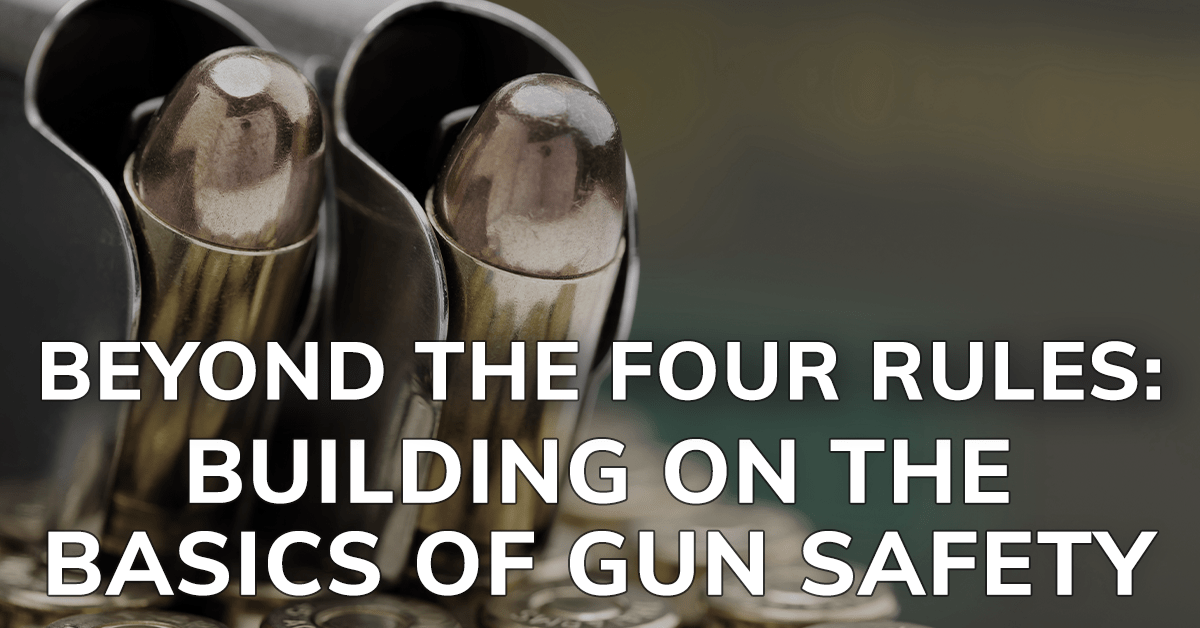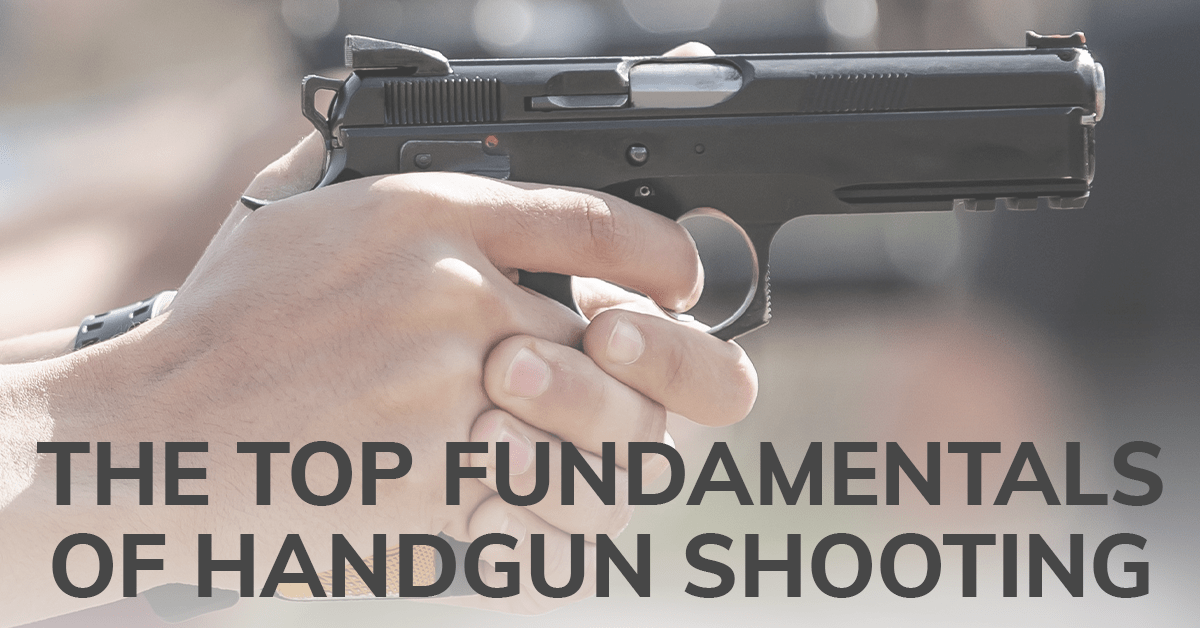Your Cart is Empty
Orders Over $100 Ship FREE (USA)!
Orders Over $100 Ship FREE (USA)!
CONCEALED CARRY
(Apparel with holster pockets or concealed-carry features)
(Apparel with holster pockets or concealed-carry features)
PARTS & GEAR
RANGE STYLE
Gift shopping & not sure about size or style? Give a gift card instead!
Gift shopping & not sure about size or style? Give a gift card instead!
GIFT IDEAS
The entire site is full of products that make great gifts, so browse all of our collections! Still not sure? Give a gift card!
The entire site is full of products that make great gifts, so browse all of our collections! Still not sure? Give a gift card!
EXPLORE
What is "Limp Wristing" and How Can You Fix It?
4 min read
It doesn’t take long in your shooting journey before you hear the term “limp wristing.” It can cause you to be inaccurate and in some cases can even cause your gun to malfunction. But what exactly is limp wristing and how can you overcome it?
The Mechanics of a Handgun
Before we get into limp wristing, we need to talk about how a handgun operates. After we insert the magazine into a semi-automatic handgun, we pull the slide back or rack the slide to load a cartridge into a chamber. We only have to do that for the first shot. Once the first round is fired, the slide cycles back from the pressure and then moves forward to load the next cartridge. This happens repeatedly as long as there are cartridges in the magazine and the gun doesn’t malfunction. In order for this to happen efficiently, the handgun needs to stay as level as possible.
There just one issue that can make this challenging – recoil! And that’s where limp wristing comes in.
Limp Wristing – What is it Exactly?
Limp wristing happens when either the shooter does not have a strong enough grip or the wrist does not remain strong and straight or both occur while shooting. When these things happen, the shooter tends to let the recoil of the gun take over and their hands ride that movement rather than managing the recoil and trying to keep the gun on target as much as possible. This causes the slide to cycle inefficiently because it’s not being maintained in a level, horizontal position. Limp wristing only happens with semi-automatic handgun shooters where the slide is responsible for cycling the gun rather than the cylinder of a revolver.
In order for your semi-automatic handgun to perform efficiently, the slide must complete the cycle. So, limp wristing can cause malfunctions such as a failure to eject the spent casing completely from the handgun, either remaining in the firearm or partially ejecting, getting caught in the ejection port as the slide comes forward causing a malfunction that is known as a stove pipe.
Another type of malfunction that may occur from limp wristing is a failure to feed, which is when the slide comes back just enough to eject the spent round but does not move forward with enough speed to chamber the subsequent round. In any of these malfunctions, it is easy for the shooter to believe that something is wrong with the handgun, when in reality the problem may lie in the way they’re shooting.
How to Fix It
Limp wristing is simple to fix but complex to diagnose because there can be many different causes that come into play.
Grip – A good grip is essential to reduce limp wristing. And having a good grip doesn’t only refer to the strength of your grip but the position of both your hands. First, with your strong hand make sure that you are as high under the beavertail or back of the gun under the slide as you can get. Get a good grip position with your support hand. Shooters who “teacup” with their support hand, holding the bottom of the grip rather than on the grip and frame of the gun are more likely to limp wrist. Hold the firearm firmly with both hands.
Stance – Your upper body should provide a foundation for your shooting, not your hands and wrists. Lean forward slightly from the waist to get a more solid foundation for shooting with your arms out in front of you. Your elbows should not be so flexed that the fly up at a 90-degree angle when the gun recoils. Think of ideal recoil as the gun moving forward and back on a horizontal plane rather than up and down during recoil.
Alternate Solutions and Special Circumstances
Many times shooters experience some physical difficulties such as arthritis that make it difficult to get a firmer grip on the firearm. And it’s easy to just to assume that these shooters won’t be able to effectively manage recoil or shoot without limp wristing type malfunction. In these cases, a change of firearm may help with malfunction issues.
Polymer frame guns are lighter and easier to carry but also come with more perceived recoil making them more difficult to manage for some. A heavier gun absorbs more of the recoil energy making recoil management a bit easier. If grip, arm or upper body strength is an issue because of a disability, consider trying different firearms to see if any will malfunction less.
Sometimes it IS the Gun
Limp wristing is a term that has also become a popular catch-all term for malfunctions. While limp wristing may indeed cause handgun malfunctions, shooters shouldn’t automatically believe they are limp wristing despite what someone may tell you. If you have tried a good grip, started paying attention to your wrists and keeping them stiffer and situated your upper body to provide a firm foundation, and despite all this are still having regular malfunctions, it just might be a problem with the gun. If you gun malfunctions often, have it checked out by a certified gunsmith to be sure.
Limp wristing is a pretty common issue for newer shooters. Even experienced shooters can have incidents of limp wristing. A good firearms instructor can determine if limp wristing is your problem and even show you ways to correct it, and a good gunsmith can make sure your firearm is in good working order and is clean and lubricated.
Once you've determined that you are limp wristing, practice, practice, practice to get your fundamentals down and build up the strength necessary to overcome the issue when you shoot.
Also in Skill Building: The Fundamentals

Beyond the Four Rules: Building on the Basics of Gun Safety
3 min read
The 4 main rules of gun safety are a good starting point, but there's more to be aware of. Here are a few some tips to stay safe with your firearm.
Read More
Tips for Drawing From a Holster — A Beginner's Guide
3 min read
Drawing from a holster is an important competency, especially if you carry a gun. Here are a few tips to help you feel more confident when mastering this skill.
Read More
The Top Fundamentals of Handgun Shooting
3 min read
Do you know what shooting fundamentals are and which skills you should be working on right after you purchase a gun? Here's our list of three of handgun fundamentals you should master right away.
Read More